5 books about Yau, John
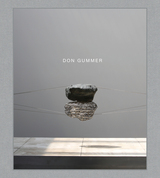
Don Gummer
Peter Plagens
The Artist Book Foundation, 2021
The trajectory of Don Gummer’s career as a sculptor began in New York City in the late 1970s with his wall reliefs of painted wood, carefully layered geometric works exhibiting a strong architectural influence. Moving beyond wood to stone, bronze, stainless steel, aluminum, and glass as his primary materials, his artworks evolved into subtly inventive freestanding sculptures, often of monumental scale, that exhibit his unfailing attention to craftsmanship and detail. The Artist Book Foundation is delighted to announce the forthcoming publication of Don Gummer, a new monograph on the artist and his highly acclaimed body of work.
Gummer was born in Louisville, Kentucky, in 1946 and grew up in Indianapolis, Indiana, where he attended the Herron School of Art and Design at Indiana University. He subsequently received both a BFA and an MFA from Yale University’s School of Fine Arts. In a 2001 interview with Peter Plagens, American artist and art critic, Gummer described his interest in sculpture as “the recontextualization of natural phenomena, of unaltered things brought into aesthetic balance by choosing and placing.” Using balance, proportion, and his unique sense of harmony, the artist is able to make durable materials seem almost buoyant. Negative space becomes an intrinsic element in his work, imparting a sense that his exquisite, seemingly permanent forms are ultimately as fleeting as any of nature’s creations would be.
The artist’s works can be found in many public collections including the Butler Institute of American Art in Youngstown, Ohio; the Massachusetts Museum of Contemporary Art in North Adams, Massachusetts; and Chase Manhattan Bank and Chemical Bank, both in New York City. He has received a number of awards from prestigious organizations such as the Louis Comfort Tiffany Foundation and the National Endowment for the Arts, and he was Visiting Artist at the American Academy in Rome. Some of his most recent sculptures appeared around Indianapolis in conjunction with his 2016 exhibition, Back Home Again.
[more]
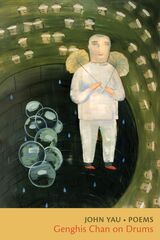
Genghis Chan on Drums
John Yau
Omnidawn, 2021
A diverse and cacophonous poetry collection tackling subjects from identity to current events.
At once comic and cantankerous, tender and discomfiting, piercing and irreverent, Genghis Chan on Drums is a shape-shifting book of percussive poems dealing with aging, identity, PC culture, and stereotypes about being Chinese. Employing various forms, John Yau’s poems traverse a range of subjects, including the 1930s Hollywood actress Carole Lombard, the Latin poet Catullus, the fantastical Renaissance painter Piero di Cosimo’s imaginary sister, and a nameless gumshoe. Yau moves effortlessly from using the rhyme scheme of a sixteenth-century Edmund Spenser sonnet to riffing on a well-known poem-rant by the English poet Sean Bonney, and to immersing himself in the words of condolence sent by a former president to the survivors of a school massacre. Yau’s poems are conduits through which many different, conflicting, and unsavory voices strive to be heard.
At once comic and cantankerous, tender and discomfiting, piercing and irreverent, Genghis Chan on Drums is a shape-shifting book of percussive poems dealing with aging, identity, PC culture, and stereotypes about being Chinese. Employing various forms, John Yau’s poems traverse a range of subjects, including the 1930s Hollywood actress Carole Lombard, the Latin poet Catullus, the fantastical Renaissance painter Piero di Cosimo’s imaginary sister, and a nameless gumshoe. Yau moves effortlessly from using the rhyme scheme of a sixteenth-century Edmund Spenser sonnet to riffing on a well-known poem-rant by the English poet Sean Bonney, and to immersing himself in the words of condolence sent by a former president to the survivors of a school massacre. Yau’s poems are conduits through which many different, conflicting, and unsavory voices strive to be heard.
[more]
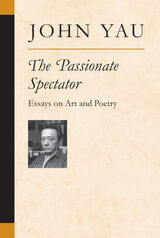
The Passionate Spectator
Essays on Art and Poetry
John Yau
University of Michigan Press, 2006
The Passionate Spectator collects essays, reviews, and art criticism by John Yau, an internationally lauded poet, critic, and curator. In this wide-ranging collection, Yau explores the intersection of art and poetry, dissolving boundaries between the artistic traditions and reimagining what it means to see and to write. Whether he is interpreting the poetic use of titles in Jessica Stockholder’s paintings, reviewing the collaborative book project between American poet Robert Creeley and German artist Georg Baselitz, or considering the significance of Frank O’Hara’s decision to have his portrait drawn wearing nothing but army boots, Yau is consistently daring, original, and contemporary.
Yau’s diverse critical sensibilities permeate The Passionate Spectator as he moves seamlessly between the visual and literary arts. Highlights of this collection include an essay on the poet as art critic, a study of the relationship between Kevin Young’s poetry and the paintings of Jean-Michel Basquiat, and an imaginative piece in which Yau speculates about what Jorge Luis Borges would have created had he been a visual artist. In the title essay, Yau lays out the duty of the spectator—a duty shared by viewer, reader, critic, and artist: “it is up to us to experience art, to engage and believe in its power.”
.Yau’s diverse critical sensibilities permeate The Passionate Spectator as he moves seamlessly between the visual and literary arts. Highlights of this collection include an essay on the poet as art critic, a study of the relationship between Kevin Young’s poetry and the paintings of Jean-Michel Basquiat, and an imaginative piece in which Yau speculates about what Jorge Luis Borges would have created had he been a visual artist. In the title essay, Yau lays out the duty of the spectator—a duty shared by viewer, reader, critic, and artist: “it is up to us to experience art, to engage and believe in its power.”
[more]
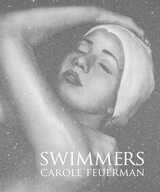
Swimmers
Carole Feuerman
John Yau
The Artist Book Foundation, 2014
Realist sculptor Carole A. Feuerman’s human-figure sculptures express a refreshing perspective on the mundane but intensely personal activities of modern life. Her powers of observation and versatility find unique expression through various materials that include marble, bronze, vinyl, and painted resins, while she incorporates both ancient and contemporary methods in the creation of her works. Swimmers: Carole Feuerman is a gorgeous and shimmering glimpse at transitory, contemplative moments in time, often captured in a veil of clear resin that replicates tumbling water droplets.
In his astute and insightful essay, John Yau describes Feuerman’sexquisitely rendered figures as subjects “caught in a moment of transition that radiates an intense eroticism.” She evokes an inward life for her figures that invites our speculation, while revealing a mysterious chasm between them and the viewer that can never be plumbed. We cannot know their thoughts and perhaps that is exactly the point. Feuerman fuses the tactile nature of her sculpture with a visual verisimilitude that provides us a fleeting glimpse into private and isolated environments—women stepping out of the shower, in the rain, or swimming—that suggest a meditative bliss.
Feuerman’s museum retrospectives have included exhibitions at the Venice Biennale; the Smithsonian National Portrait Gallery in Washington, DC; The State Hermitage in St. Petersburg, Russia; The Palazzo Strozzi Foundation in Florence, Italy; and the Circulo de Bellas Artes in Madrid, among others. Her work is featured in public, private, and corporate collections, including Grounds For Sculpture, Trenton, NJ; the El Paso Museum of Art, El Paso, Texas; the Bass Museum of Art, Miami Beach, FL; and art-st-urban, Lucerne, Switzerland. Her large-scale Olympic Swimmer was featured in the Olympic Fine Arts exhibition at the 2008 Summer Games in Beijing.
[more]
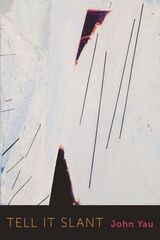
Tell it Slant
John Yau
Omnidawn, 2023
Poems that consider doubleness and truth-telling through the voice of an Asian American poet, while referencing a range of writers and pop culture figures.
Emily Dickinson begins one of her poems with the oft-quoted line, “Tell all the truth but tell it slant." For Asian Americans, the word “slant” can be heard and read two ways, as both a racializing and an obscuring term. It is this sense of doubleness—culminating in the instability of language and an untrustworthy narrator—that shapes, informs, and inflects the poems in John Yau’s new collection, all of which focus on the questions of who is speaking and who is being spoken for and to. Made up of eight sections, each exploring the idea of address—as place, as person, as memory, and as event —Tell It Slant does as Dickinson commands, but with a further twist. Yau summons spirits who help the author “tell all the truth,” among whom are reimagined traces of poets, movie stars, and science fiction writers, including Charles Baudelaire, Thomas de Quincey, Philip K. Dick, Li Shangyin, and Elsa Lanchester.
Emily Dickinson begins one of her poems with the oft-quoted line, “Tell all the truth but tell it slant." For Asian Americans, the word “slant” can be heard and read two ways, as both a racializing and an obscuring term. It is this sense of doubleness—culminating in the instability of language and an untrustworthy narrator—that shapes, informs, and inflects the poems in John Yau’s new collection, all of which focus on the questions of who is speaking and who is being spoken for and to. Made up of eight sections, each exploring the idea of address—as place, as person, as memory, and as event —Tell It Slant does as Dickinson commands, but with a further twist. Yau summons spirits who help the author “tell all the truth,” among whom are reimagined traces of poets, movie stars, and science fiction writers, including Charles Baudelaire, Thomas de Quincey, Philip K. Dick, Li Shangyin, and Elsa Lanchester.
[more]
READERS
Browse our collection.
PUBLISHERS
See BiblioVault's publisher services.
STUDENT SERVICES
Files for college accessibility offices.
UChicago Accessibility Resources
home | accessibility | search | about | contact us
BiblioVault ® 2001 - 2024
The University of Chicago Press









